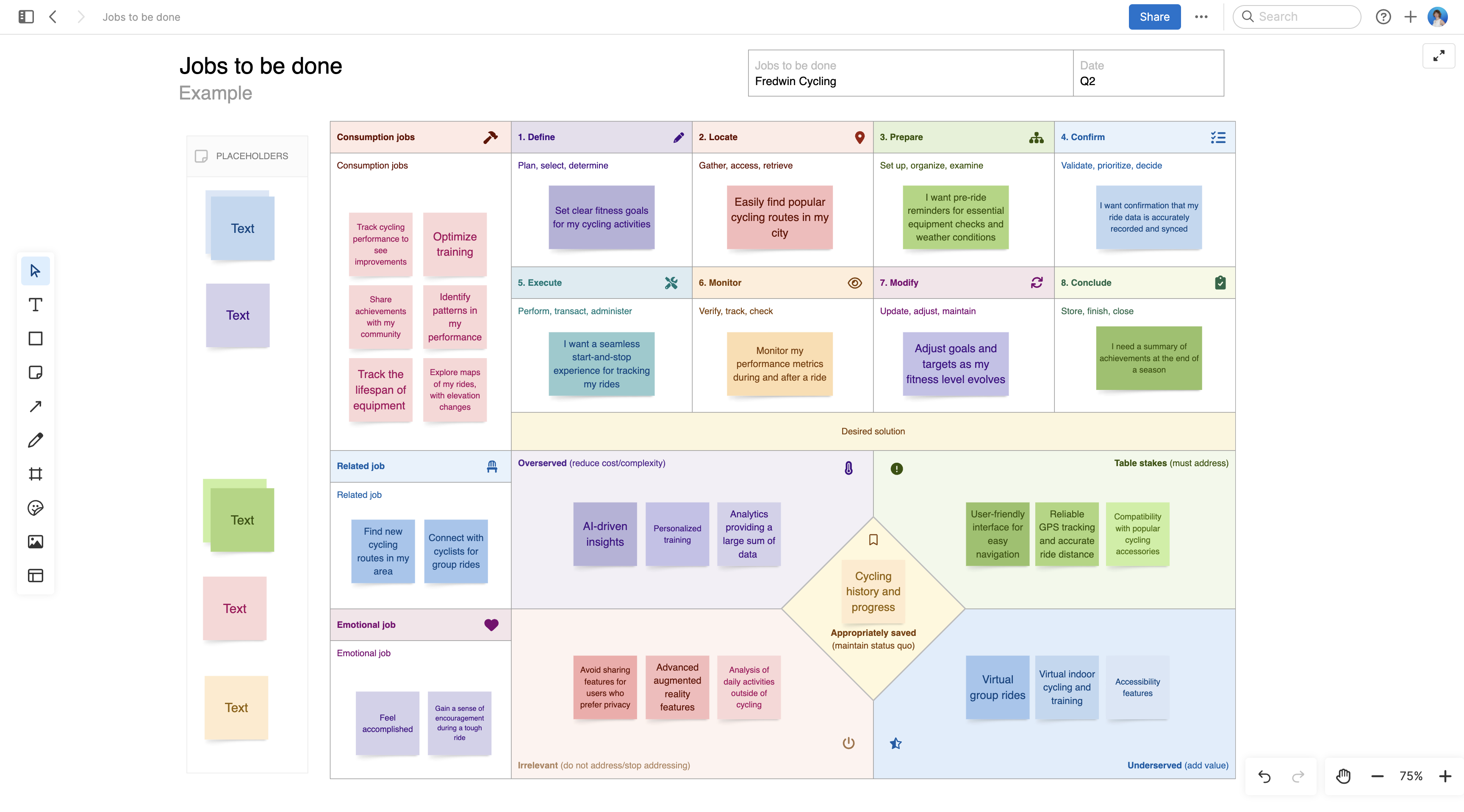Jobs-to-be-done template
Prioritize what to build based on specific customer "jobs" or challenges
Use template
About the jobs-to-be-done template
Start product development with a clear focus on what your customers need by understanding the jobs they are trying to complete. This jobs-to-be-done (JTBD) framework template helps you define and categorize those tasks, giving you deeper insight into your users. By understanding why people choose — or look for alternatives to — a product, you can create solutions that address their needs and deliver real value.
Included in the jobs-to-be-done template
Use this pre-formatted JTBD framework template to streamline your process with built-in capabilities like:
A menu of classic whiteboard features such as shapes, sticky notes, grids, emojis, and additional templates to add to your JTBD framework
Presentation frames to easily share your work with stakeholders
Connectors to visually represent cross-team dependencies
Quick-access best practices and a pre-filled JTBD example for guidance
Inline comments to capture feedback
A fist-to-five voting tool to gather confidence votes from collaborators
How to use the jobs-to-be-done template
Product managers employ various prioritization frameworks to identify customer needs and how their solution can help. The jobs-to-be-done framework focuses on delivering meaningful outcomes by addressing specific jobs customers need to complete.
Use this template to go beyond just the functional aspects of a job — to also consider the emotional and social factors that shape customer decisions. Fill out each section to capture the six types of customer needs outlined by the framework's creator:
Core functional job-to-be-done
Desired outcome
Related jobs
Emotional and social jobs
Consumption chain jobs
Buyer’s financial desired outcome
Be thoughtful about what customers truly want. This will help you evaluate new product ideas and prioritize what to build next, keeping user needs at the heart of your decisions.
Best practices
Align your efforts with the genuine needs and desires of customers.
Center the customer: Keep your focus on the user and their perspective. Articulate the functional and emotional aspects of the jobs they are trying to fulfill.
Bring in the team: Schedule sessions with cross-functional teams to collectively review and refine details. Encourage team members to add comments, share insights, and highlight areas that require deeper discussion.
Move ahead: Establish routine reviews of jobs. Continue to refine the whiteboard in response to an evolving market and user feedback — ensuring it remains a dynamic source of information.